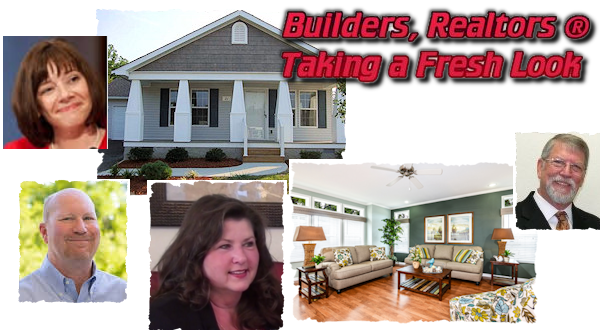“We had an Energy Star home done right, and families could qualify for a broad range of mortgages.”
— Stacey Epperson, Next Step Network
Lakeland, Fla. — Stacey Epperson used to have some fairly strong ideas about manufactured housing — none of them particularly flattering. The materials must be “weird,” she thought, and the quality questionable.
But all of those notions evaporated one cold, snowy December day in 2004, when she visited a Clayton Homes plant in Hodgenville, Kentucky.
As president and CEO of Frontier Housing, a nonprofit that constructed site-built Energy Star homes for low-income families, Epperson wanted to explore ways to better meet the huge demand for the sustainable housing her organization produced — without compromising its exacting standards.
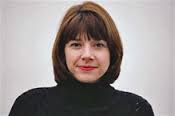
Stacey Epperson Photo credit: Next StepUS
“We were running about six months to build a new home from start to finish,” she says. “I wanted to cut that time in half.”
In Hodgenville, she found not only a solution that far exceeded her production needs, but an epiphany about factory-built homes that would alter the course of her professional life.
Discovering MH
Epperson is among a growing number of traditional builders and real estate agents who have come to embrace the quality, affordability and lifestyle options offered by modern manufactured homes.

Mike Wnek is an early convert who made the transition from construction site to factory back in 1978 — two years after the U.S Department of Housing and Urban Development ushered in the era of HUD-code homes.
“Having been a site builder and a factory builder, I really appreciate the differences,” says Wnek, a co-founder of Palm Harbor Homes, one of the nation’s largest producers of factory-built housing.
Today, he serves as vice president of new business development for Jacobsen Homes, another high-end manufacturer based in Florida.
The key, he says, is that manufactured housing is built in a controlled environment.
“It doesn’t matter if it’s raining or snowing, the work gets done. And we’re not standing by waiting for some inspector to show up, because in our business, they’re there every day.
“People don’t realize how regulated our industry is. It’s really over-regulated and over-built to the max, compared to the rest of the construction business.”
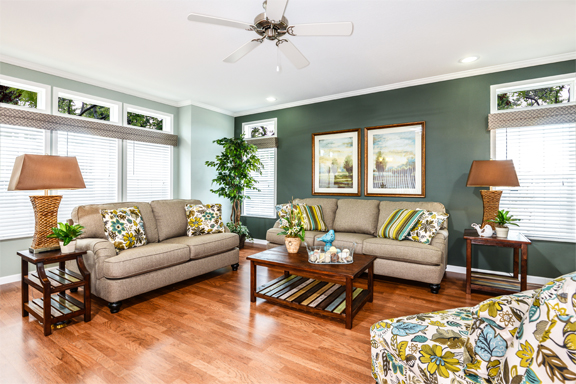
There is tremendous comfort, he says, in knowing he can go to work every day and get things done.
“There is also a great deal of comfort in the consistency of the building codes.”
Epperson echoes Wnek’s observations.
More than a decade has passed since that winter day she visited her first manufactured housing plant.
While her own construction crew was off during Christmas break, idled by the bitter cold and snow, the Hodgenville team was busily assembling homes, inside the comfort of the factory.
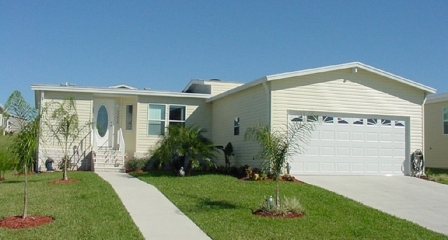
And, to Epperson’s surprise, they were using the same materials used in her organization’s own, quality site-built homes.
“My entire life I believed that the (manufactured home) industry used materials that you could not replace at Lowes — just weird stuff. That was all wrong.”
That misconception had always kept her from looking into manufactured homes to meet the needs of her clients: It was assumed that the materials used were too exotic and hard to come by for the average family to make repairs when needed — a key requirement for the organization’s sustainable housing program.

Convinced she was on the right track, Epperson jumped in with both feet.
“We were very smart construction people and tried to do it ourselves,” she says.
Frontier decided to license itself as a retailer, and also built the homes.
“We cut our time to about a month turnaround. We were doing single sections [also known as single-wides], in less than a week.”

The move to manufactured housing opened up a whole new world for the non-profit and its mission.
“We had an Energy Star home done right, and families could qualify for a broad range of mortgages,” Epperson says.
Other nonprofits started looking at what Frontier was doing and in 2010, Epperson founded Next Step, the first national network of 46 nonprofits in 26 states using high-quality, Energy Star manufactured homes to help meet the affordable housing needs of lower income families.
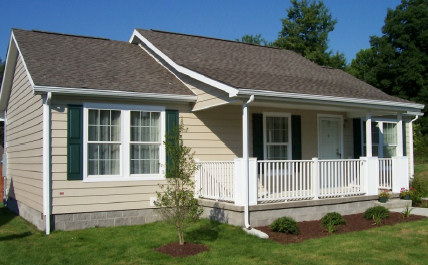
Next Step has teamed up with some of the biggest manufacturers in the business — Clayton, Champion and Cavco — to craft Energy Star homes that exceed basic HUD-code standards with added requirements, like shower grab bars and other features that allow people to age in place.
Next Step specs 2×6 construction, Energy Star appliances, LED or compact fluorescent lighting, high performance windows and doors and drywall throughout.
“They all do a good job for us and they are all committed to our vision,” says Epperson.
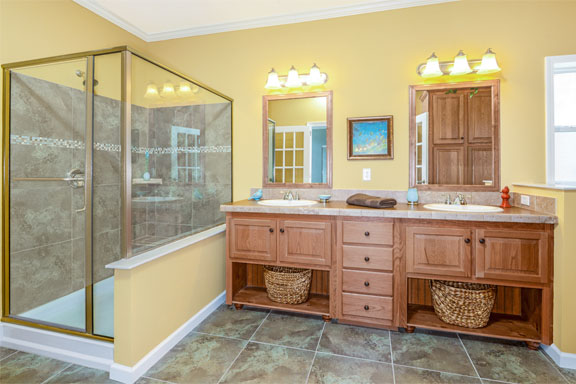
High-End Homes
Meantime, a growing number of builders and real estate agents, battered and bruised from the recession, have found another niche in factory-built homes — one that caters to buyers on the higher end of the pricing spectrum.
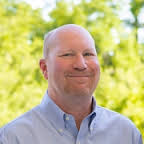
“We’re seeing more licensed home builders throughout the country getting involved in modular housing, beginning with the meltdown,” says Jim Ayotte, executive director of the Florida Manufactured Housing Association.
Craftsmen skilled in traditional construction trades were forced to find other kinds of work when home building tanked, says Ayotte.
“There’s a real void, so to remain a home builder, they’re going into manufactured housing.”
And finding it very much to their liking.
“Other builders are absolutely seeing the advantage,” says Wnek, the former traditional builder.
The stable and predictable nature of producing homes in a factory is especially appealing to builders who rode the roller coaster of the housing crisis — especially those who spent six or more months constructing homes, only to find themselves saddled with inventory they could not sell.
“In our business, you’re more of a just-in-time delivery system. You don’t have to over-inventory,” Wnek says.
Also, the price of materials is more stable. The factories can buy in bulk from suppliers and are able to protect their pricing.
“We’re not at the whim of everyday price fluctuations,” he says.
In coastal areas, changes in flood zones and wind codes — which now require many new homes to be built on platforms — have given factory-built homes, especially modulars, an even greater competitive advantage over site-built construction.
“We have a 25 percent advantage in cost over a typical site-built builder, because we’re not on scaffolds and cranes for months at a time. We’re in and out.”
That translates to huge savings on luxury models that approach seven figures.

Palm Harbor Homes, for instance, has expanded into higher-end modular housing, with projects in Key West that feature homes that cost several hundred thousand dollars, says Ayotte.
In Florida, builders of factory-crafted modular homes and commercial buildings have been growing by about 10 to 15 percent per year over the past five years, says Wnek.
“There is a creeping increase in modular versus manufactured homes, because manufactured homes are so much of our core business,” he says. “The over-55 retirement market will remain manufactured homes.”
The Ultimate Retirement Home
It is the retirement market that has prompted not only builders, but real estate agents to take a new look at manufactured homes in many parts of the country, especially retirement meccas in the Sunbelt.
That, in turn, creates a market in the colder climes they leave behind.
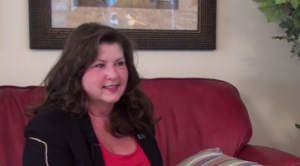
Realtor Linda Hazelhoff, an associate broker in Kalamazoo, Michigan, has found manufactured homes to be an ideal fit for Michigan snowbirds who want to follow the sun in the winter, but be near family and friends back home the rest of the year.
One such retired couple inspired Hazelhoff to take her first good look at the manufactured home option. They had sold their residence in Michigan and bought another in Florida. A few years later, they decided they wanted to also have a place to call home in Kalamazoo.
Hazelhoff, whose husband and architect son are long-time traditional custom builders, decided to step off the beaten path and took them to tour a manufactured home that was listed in a local MH community.
The couple, who had never considered a factory-built house, fell in love with the home and the lifestyle. So did Hazelhoff, who has been involved in hundreds of manufactured home sales since that first one nearly two decades ago.
“It’s a very affordable and very easy lifestyle,” she says. “The MH community takes care of the grass and the snow.”
The homes are low-maintenance, the communities secure, she added, and if the owner wants to leave for the winter, all they have to do is lock the door behind them.
Manufactured homes are a good option in Kalamazoo, where it is hard to find a conventional home for under $250,000, says Hazelhoff.
“I try to educate my associates about the quality of the homes — standard plumbing, open floor plans, quality construction,” says the builder’s wife.
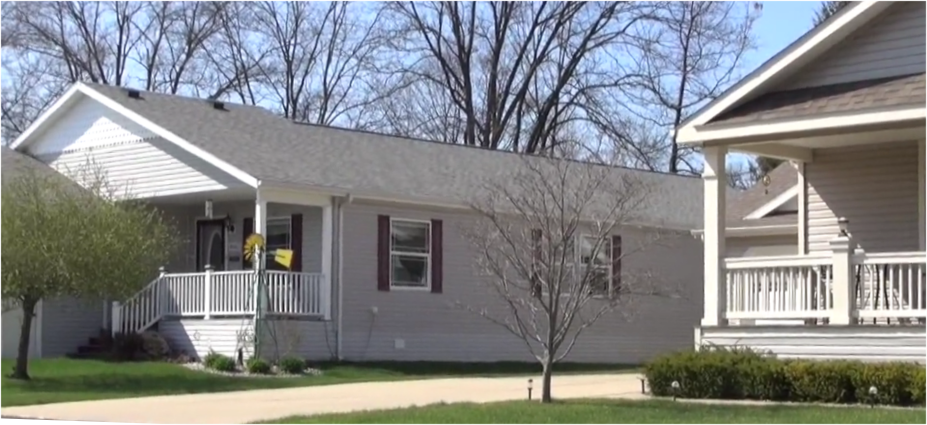
“Everything we’re looking for in a traditional stick-built home is available with manufactured housing.”
At about half the price of a comparable site-built home.
A multi-section manufactured home with a customized interior, drywall and hardwoods can be had for $75,000, she says.
Something for Everyone
June 15th will mark the 40th year since modern HUD-code manufactured homes replaced the mobile homes and shoddy trailers that once housed the nation’s poorest residents.
Today’s manufactured homes are sturdy and elegant, appealing to a broad demographic — from young families looking for a basic shade and shelter price point, to frugal millionaires looking for a customized estate home, to everyone in between.
Yet only in recent years have builders and real estate agents begun to discover the housing industry’s best-kept secret. Those who do, have become true believers like Stacey Epperson, who has made factory-built homes her life’s work.
Epperson’s Louisville, Kentucky-based Next Step Network of nonprofits continues to grow, especially in the western states.
Self Help Enterprises is one of several California nonprofits working with Next Step through a state program to repair or replace the older mobile homes of a bygone era.
“They’re looking for homes that are in poor condition or are very energy inefficient,” says Epperson.
Next Step also has expanded into modular housing, including a duplex project now under way in Waco, Texas.
“We’ve seen a surge of interest in the last year in California, Arizona, New Mexico and Texas — which is ironic that we’re sitting on the east coast and growing on the west.”
The next surge is likely to come in Oregon, she says.
“They’re facing a real housing crisis there. They have a homeless crisis and prices are going way up.” Next Step sees education as a key to greater acceptance there and nationally. ##

 manufacturedhomelivingnews.com Manufactured Home Living News
manufacturedhomelivingnews.com Manufactured Home Living News
